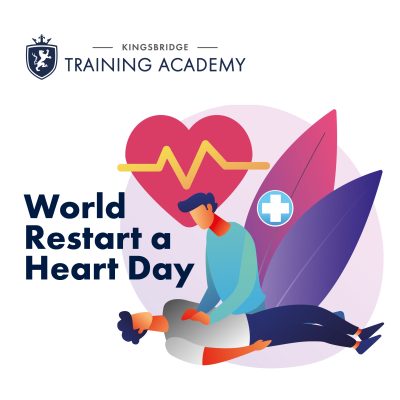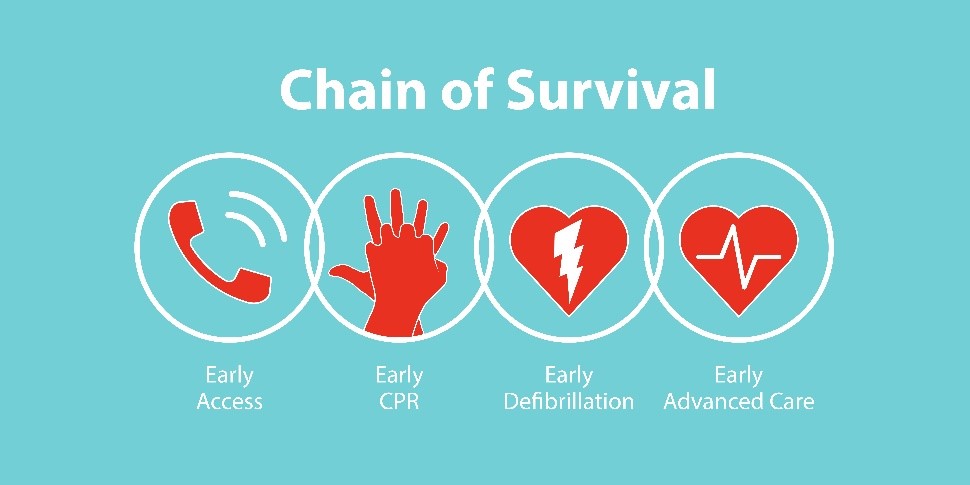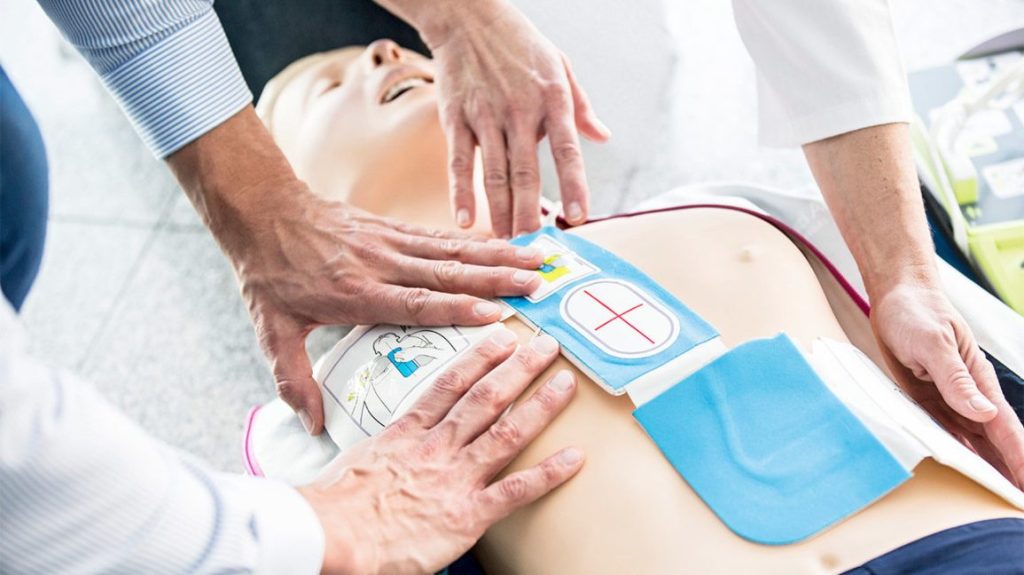World Restart a Heart Day 2021

World Restart a Heart Day is observed on the 16th October each year, and its aim is to raises awareness about cardiac arrest and helps people to learn CPR, giving them life saving skills and the confidence to use them.
Why Learn?
Did you know, if you have an out-of-hospital cardiac arrest in the UK you have less than a one in ten chance of surviving?
British Heart Foundation, 2021
By learning and performing CPR, you could be the difference between life and death for a loved one at home, a colleague at work, or a stranger in the street.
For the best chance of survival, we must respond quickly and accurately.
Your two hands can save a life!
How to Restart a Heart
CPR in 5 steps (The RCUK’s Guidelines during the COVID-19 pandemic)
Step 1: Shake and shout
If you come across someone who is unconscious, always check for danger and look for risks before you start helping.
Someone having a cardiac arrest will either not be breathing or they won’t be breathing normally. They also won’t be conscious.
Check for a response – gently shake the person’s shoulders and ask loudly ‘are you alright?’
Shout for help – if someone is nearby, ask them to stay as you might need them. If you are alone, shout loudly to attract attention, but don’t leave the person.
Step 2: Call 999
If the person is not breathing or not breathing normally:
- ask someone to call 999 immediately and ask for an ambulance
- ask someone for a public access defibrillator (PAD).
If there’s no one around call 999 before starting compressions.
Step 3: Cover mouth and nose with cloth.
- If you think there’s a risk of infection, lay a towel or a piece of clothing over the mouth and nose. Don’t put your face close to theirs.
- If you’re sure the person is breathing normally, then put them in the recovery position.
Step 4: Give chest compressions
Do not give rescue breaths at this time.
- Kneel next to the person.
- Place the heel of one hand in the centre of their chest. Place your other hand on top of the first. Interlock your fingers.
- With straight arms, use the heel of your hand to push the breastbone down firmly and smoothly, so that the chest is pressed down between 5–6 cm, and release.
- Do this at a rate of 100 to 120 chest compressions per minute – that’s around 2 per second.
Step 5: Keep going
- Keep going until professional help arrives and takes over, or the person starts to show signs of regaining consciousness, such as coughing, opening their eyes, speaking, or breathing normally.
- If you’re feeling tired, and there’s someone nearby to help, instruct them to continue.
If you’re the person giving CPR to someone it can be a traumatic event, even if they survive.

Our CPR Courses
We, at Kingsbridge Training Academy, offer various Life Support courses to ensure that our delegates are equipped with the experience, confidence, knowledge and skill needed to respond to an emergency quickly and correctly.
Choosing our educational course will provide you with all that you need to restart a heart and safe a life.

CPR with AED
This course teaches you the practical skills required for dealing with an unresponsive casualty, with the use of an Automated External Defibrillator (AED).
Suitable for: All skill levels including non-First Aiders, Dental and Medical Practitioners and Nurses
Although we hope that you will never have to use this knowledge, you will never regret investing in this education.
Because Life Matters.
Written by:
Geana Convery
Marketing Officer
